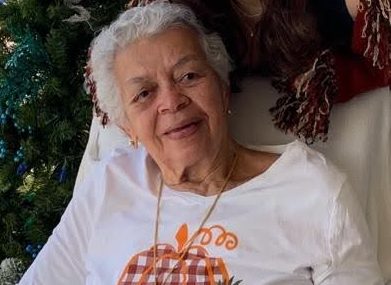Jean Prysock, who passed away on June 28, 2024 at the age of 97 in North Carolina, leaves behind an extraordinary legacy and The Jazz Loft in Stony Brook is a big part of that story. Prysock, who was married to jazz great Arthur Prysock, was never one to take a back seat and embodied the old adage that if “you want something done, give it to a busy person.”
Her life was full with volunteer work and helping others. In her later years she became a key spark in establishing The Jazz Loft (TJL). As a founding board member, Prysock worked with founder and president Tom Manuel, attending initial meetings with The Ward Melville Heritage Organization board and their President, Gloria Rocchio, as the idea of TJL became a reality.

“Jean tirelessly worked public relations for The Jazz Loft when we first opened in 2014,” Manuel said. “She donated her husband’s archives and that was a big addition to our collections. It opened the door for others that followed. She was an incredible mentor to me, and a real pioneer in so many shapes and forms, and more importantly, one of my dearest friends.”
Born and raised in the Bedford Stuyvesant area of Brooklyn, Prysock graduated from Franklin K. Lane High School, receiving awards for her dedication to others and her athletic abilities.
Prysock was married to Arthur for 49 years. The couple met at the Savoy nightclub, where Arthur was performing with the Buddy Johnson Band.
“My dad thought my mom would be an easy pickup, but she wasn’t,” laughed daughter Jeanartta. But Prysock’s best friend Gloria was dating Arthur’s brother and that made for an introduction.
They were married on June 6, 1948.
They bought their first home in Jamaica, N.Y. Arthur and Prysock loved to entertain and their home was known for great parties, good food and the best BBQ around. Christmas Eve parties were Prysock’s specialty and people came from far and wide, which eventually required her to transform the party into a ticketed dinner-dance.
Following Arthur’s death in 1997, Prysock did not slow down, filling her days with a variety of volunteer opportunities and positions on advisory boards.
Prysock volunteered at the Veterans Hospital in St. Albans, Goldwater Hospital and Harlem Hospital. Prysock organized shows for the patients at Sloan Kettering Cancer Center, featuring her talented husband. She was active in the PTA at P.S. 140 in Queens. She eventually received a position on the P.S. 140 Board of Education, and headed the Higher Horizons program.
In addition to her school and community work, the sport of bowling called. For 22 years Prysock volunteered at Cardinal Lanes, and had a league of young bowlers known as the Prysock Junior Bowlers. Bowling became a big part of her life. Through communication with Charlie Venable, a pro bowler, she got involved with the pro bowlers at Paramus Lanes, becoming a sponsor of the team The Prysock Five. Jean was the first female recipient of an award for dedication to the world of bowling.
“You couldn’t tell my mom ‘no’ to anything,” remembers Jeanartta. “That just made her more determined. She would find a way.”
When a local Portuguese family suffered a house fire resulting in the death of several children, Jean organized a fundraising effort to raise money so that the family could relocate to a new home.
Even though the community was divided by race, income and ethnicity, Jean brought everyone together and not only raised enough money for the family to buy a new home, but she also organized an interracial-interfaith group hoping to bring better understanding between all people.
The National Conference of Christians and Jews presented her the Ambassador of Good Will award and she was also recognized by local professional business groups and was named to the Nassau County Advisory Board of Volunteers Services.
Prysock leaves behind two daughters, Jeanartta and Jeanine; grandchildren Jara, Arthur, and Jeanisha; and great grandchildren Kiya, Kaily, and Hibiki..
Prysock’s motto was “Respect yourself and others will do the same. And remember no one owes you anything. Learn to love, learn to be better and the world will become a better place to live. When you help someone else up the hill, you help yourself.
JEAN
Jean
Am I just dreaming
Or is it so
You are an angel
A glow
If I should awaken would you be there?
Queen of my castle
In the air
You’re my inspiration and to hold you near
When I need consolation
You count every fear
Then
Jean, you make my life seem
Just like a dream
Please say you will always be my Jean
Please say you will always be my Jean
Please say you will always Be my Jean
Just my Jean
– By Arthur Prysock

















